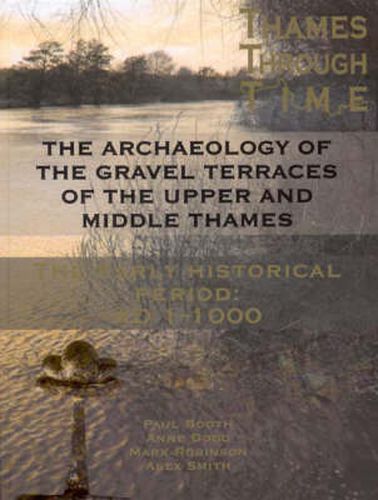Readings Newsletter
Become a Readings Member to make your shopping experience even easier.
Sign in or sign up for free!
You’re not far away from qualifying for FREE standard shipping within Australia
You’ve qualified for FREE standard shipping within Australia
The cart is loading…






The gravel terraces of the river Thames have revealed a wealth of archaeological information about the evolution of the landscape of the region, the development of the settlement pattern, and past human occupation. Much of this has come to light in the course of gravel quarrying, which has been so extensive that the Thames Valley now provides one of the richest resources of archaeological data in the country. This volume provides an up to date overview of the archaeological evidence from the valley for the late Iron Age, Roman and Anglo-Saxon periods, broadly speaking the first millennium AD. The area studied in detail comprises the Upper Thames Valley, from the source of the river to the Goring Gap, and the Middle Thames Valley, from the Goring Gap to the start of the tidal zone at Teddington Lock. A summary of evidence for the character of the river and the vegetation and environment of its floodplain is followed by a detailed account of the evolving settlement pattern as currently understood from archaeological evidence. The authors then consider what archaeology can reveal about the late Iron Age, Roman and Anglo-Saxon populations of the valley, and their changing lifestyles, culture, identities and beliefs. This is followed by a review of the evidence for production, trade, transport and communication, and the archaeology of power and politics. The volume concludes with a discussion of the state of knowledge today and its limitations, and emerging themes and problem areas for future research.
$9.00 standard shipping within Australia
FREE standard shipping within Australia for orders over $100.00
Express & International shipping calculated at checkout
The gravel terraces of the river Thames have revealed a wealth of archaeological information about the evolution of the landscape of the region, the development of the settlement pattern, and past human occupation. Much of this has come to light in the course of gravel quarrying, which has been so extensive that the Thames Valley now provides one of the richest resources of archaeological data in the country. This volume provides an up to date overview of the archaeological evidence from the valley for the late Iron Age, Roman and Anglo-Saxon periods, broadly speaking the first millennium AD. The area studied in detail comprises the Upper Thames Valley, from the source of the river to the Goring Gap, and the Middle Thames Valley, from the Goring Gap to the start of the tidal zone at Teddington Lock. A summary of evidence for the character of the river and the vegetation and environment of its floodplain is followed by a detailed account of the evolving settlement pattern as currently understood from archaeological evidence. The authors then consider what archaeology can reveal about the late Iron Age, Roman and Anglo-Saxon populations of the valley, and their changing lifestyles, culture, identities and beliefs. This is followed by a review of the evidence for production, trade, transport and communication, and the archaeology of power and politics. The volume concludes with a discussion of the state of knowledge today and its limitations, and emerging themes and problem areas for future research.